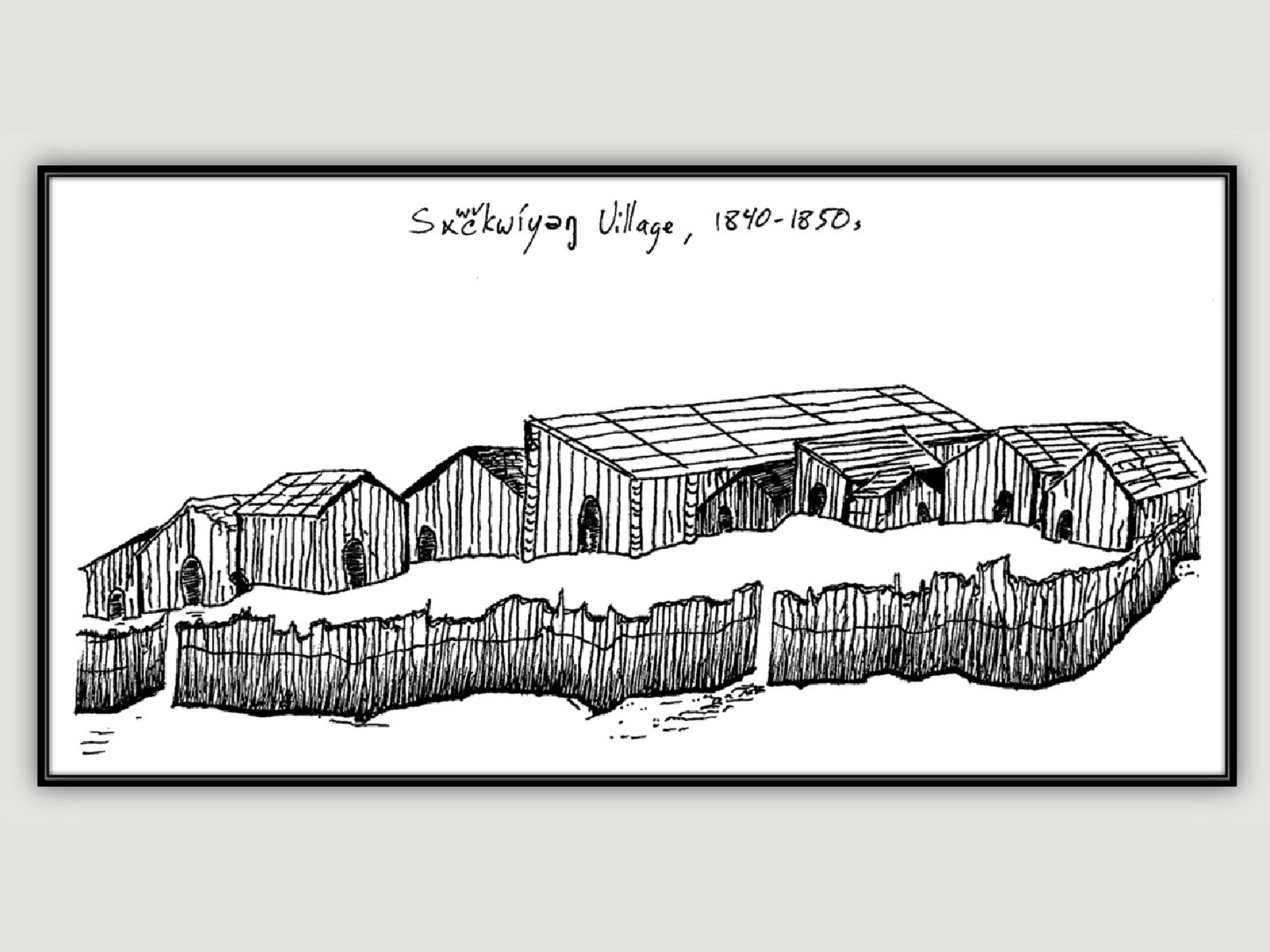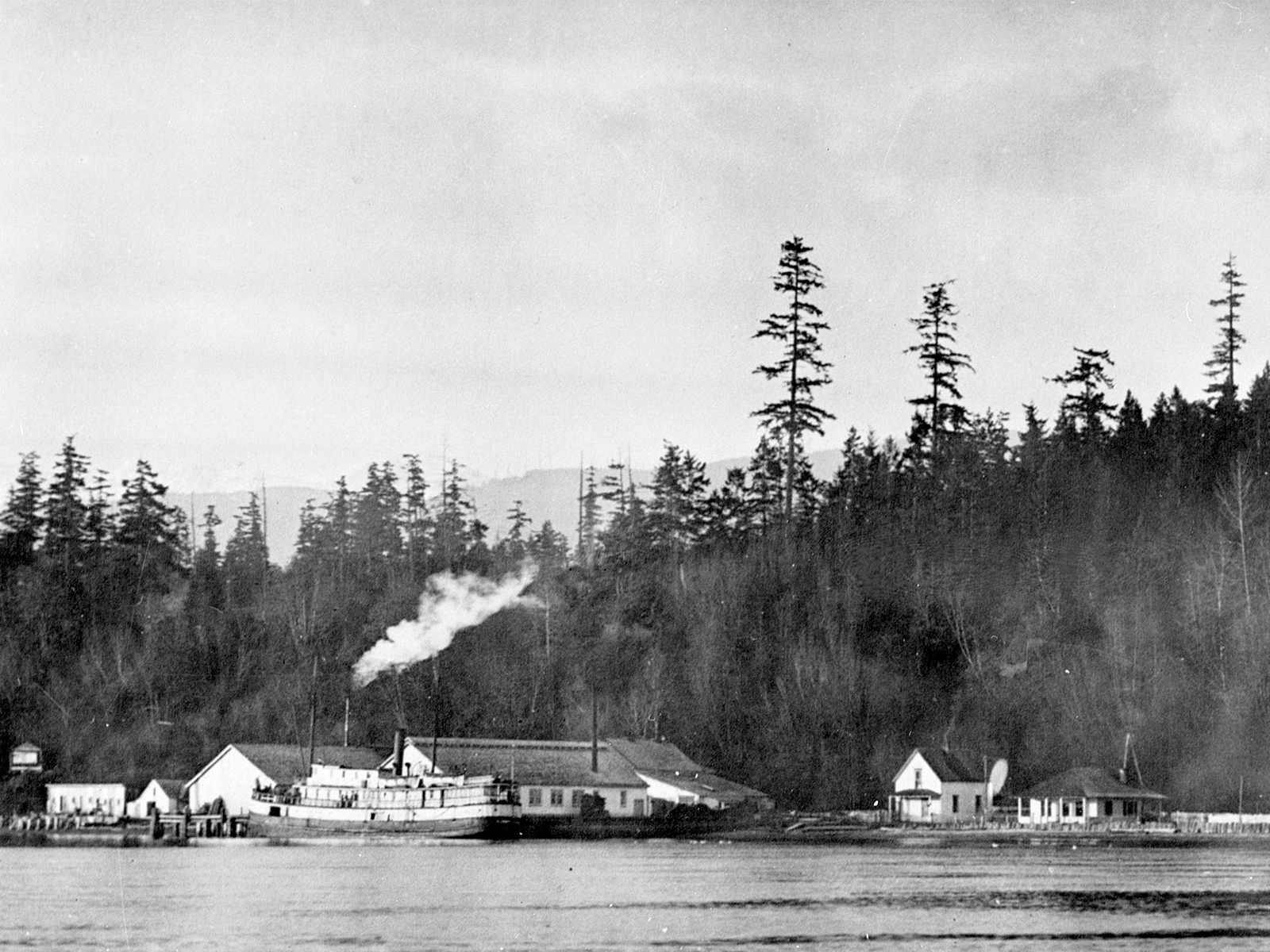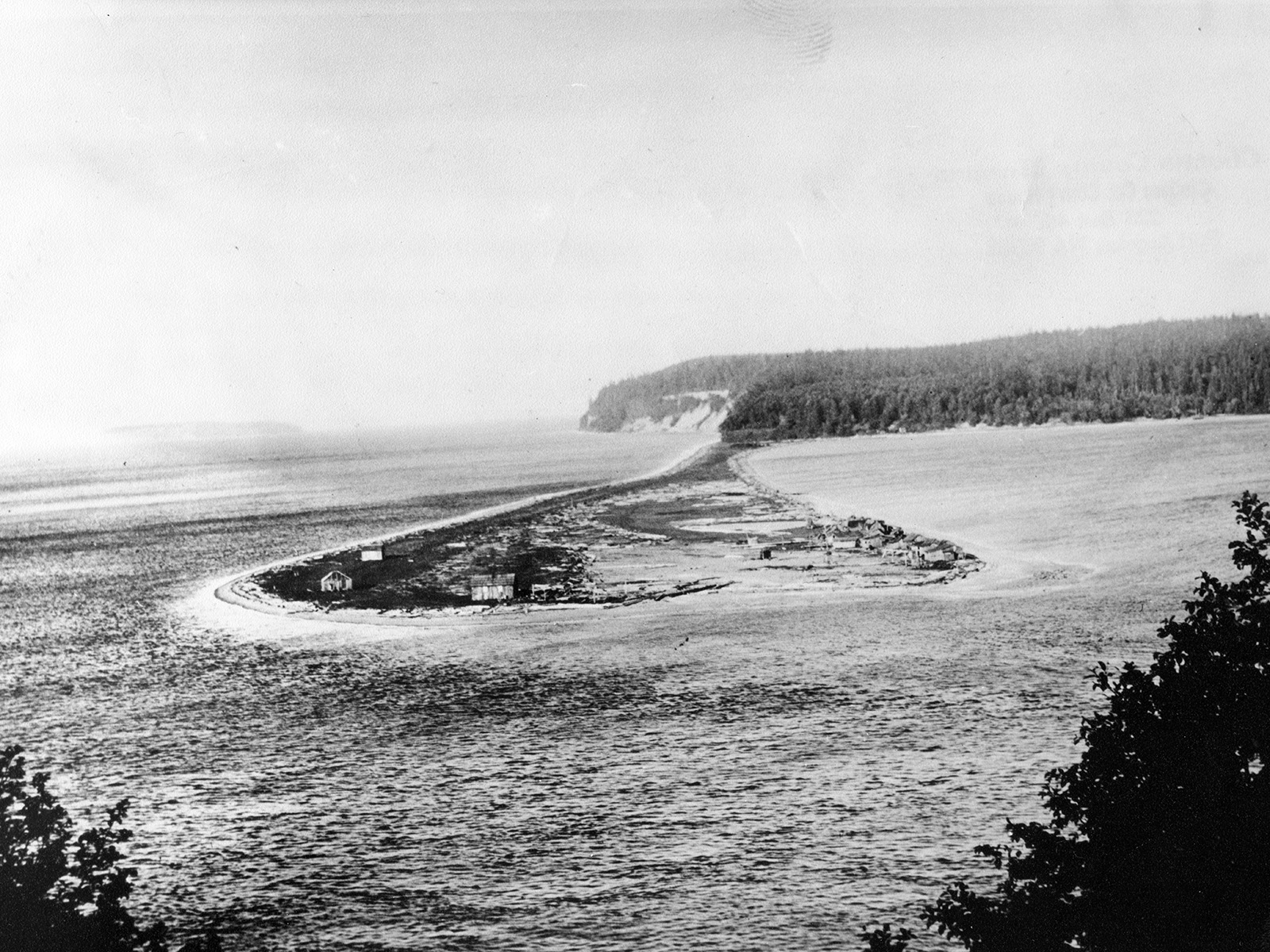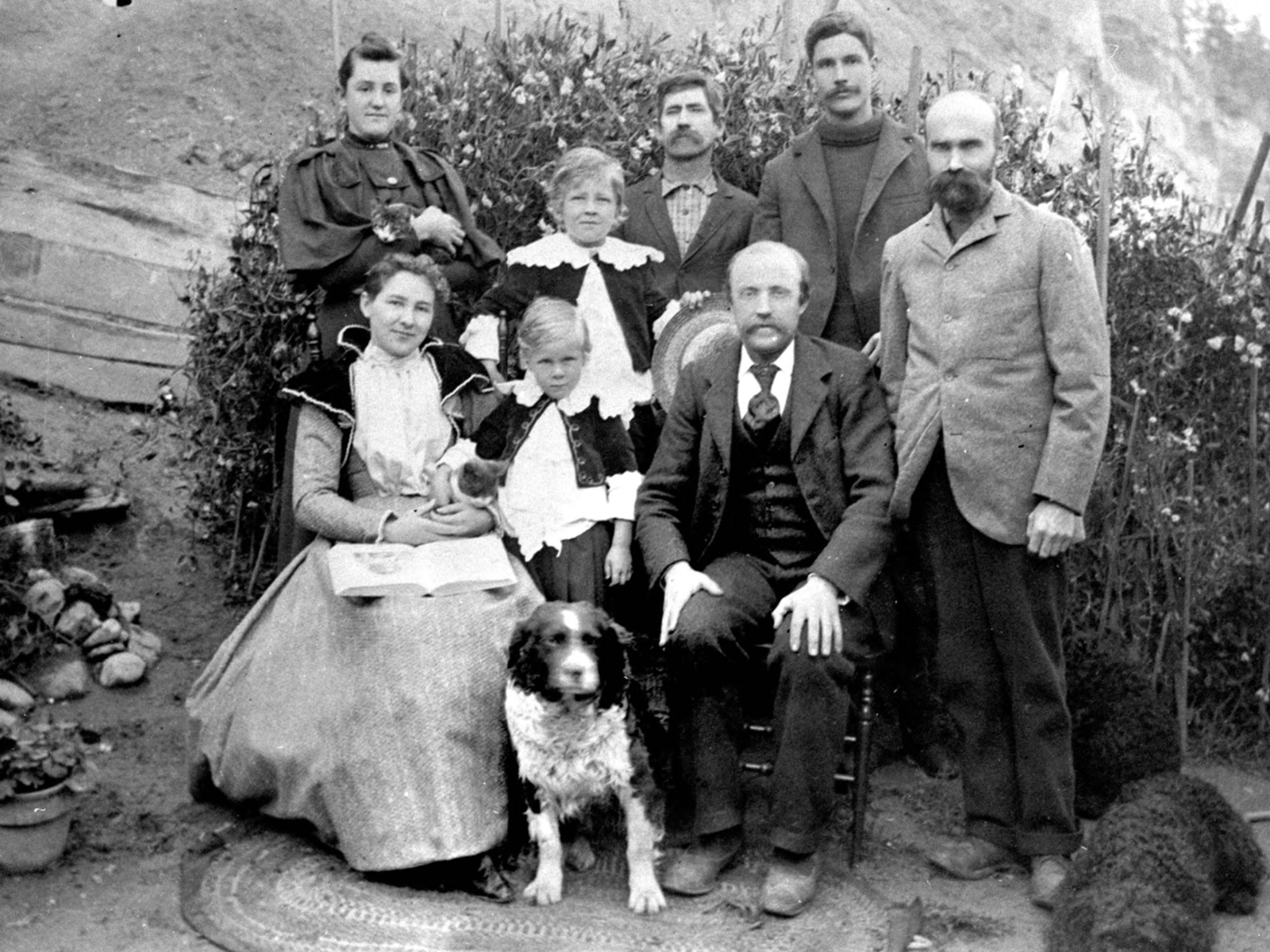Origins of the
Sequim Campus
Origins of the
Sequim Campus
Marine and Coastal
Research Laboratory
Marine and Coastal
Research Laboratory
The PNNL-Sequim campus is home to the Department of Energy’s (DOE's) only marine research facility. Development of the Marine and Coastal Research Laboratory began in the 1970s with the construction of the beachfront science facilities. However, PNNL-Sequim has over 600 years of documented history, beginning with sxʷčkʷíyəŋ (pronounced “sh-tch-kwung”), an ancestral S'Klallam village site.
In the beginning: S’Klallam Village site

Sxʷčkʷíyəŋ was a moderately large village site that consisted of 10 homes and a central potlatch building along the beachfront. Dwellings were also spread along the sand bar to the north on what is now called Bugge Spit and across the bay on the west end of Travis Spit. Like other S’Klallam village sites from the 19th century, sxʷčkʷíyəŋ experienced the smallpox epidemic and the encroachment of European settlers into their ancestral lands, causing S’Klallam members to move elsewhere. By 1874, under the leadership of James Balch, some S’Klallam families joined together to purchase 210 acres of land, which they called Jamestown. Families slowly moved to Jamestown, while others remained near the original village by Washington Harbor.
Bugge Cannery era

Around 1899, Hans J. Bugge purchased land next to Washington Harbor to develop the Bugge Cannery. The clam cannery operated seasonally between October and April and included a fruit cannery and a creamery. By 1912, the cannery began canning apples, plums, and prunes. A few years later, salmon was added. Bugge built a series of cabins and apartments south of the cannery for the S’Klallam cannery workers that he employed. Some S’Klallam workers also lived on the west end of Travis Spit by this time.

The original creamery and cannery burned in 1929, but the Bugge family rebuilt and continued to operate the cannery. The cannery was one of the largest in the country at the time. During its peak, the cannery had 30–40 employees and shipped over 10,000 cases of clams per year. The Bugge family operated the cannery for over 60 years before selling the property to Battelle in 1966.

Today, PNNL-Sequim builds upon a rich history of research related to marine and coastal resources, environmental chemistry, marine renewable energy, water resources modeling, ecotoxicology, biotechnology, and national security.